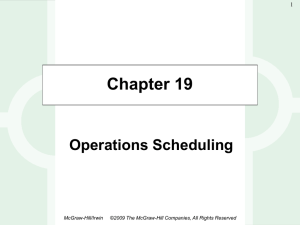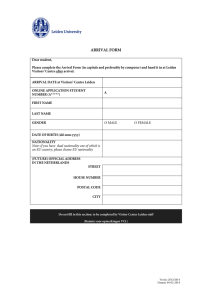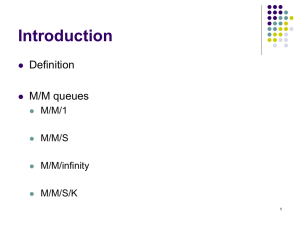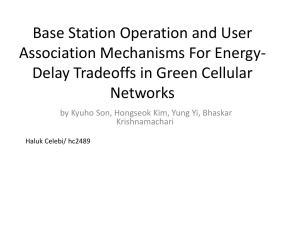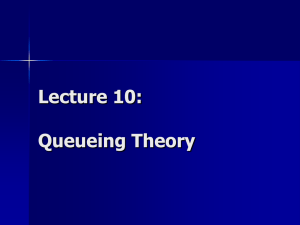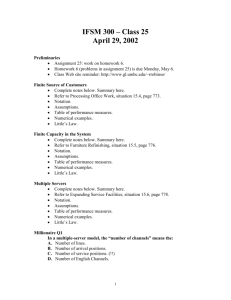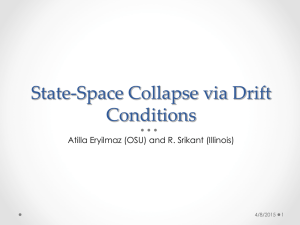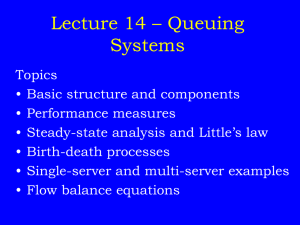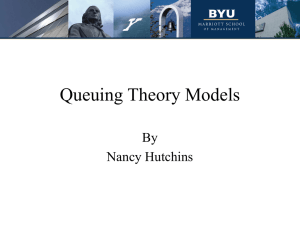Module 8A Queuing Model Summary
advertisement
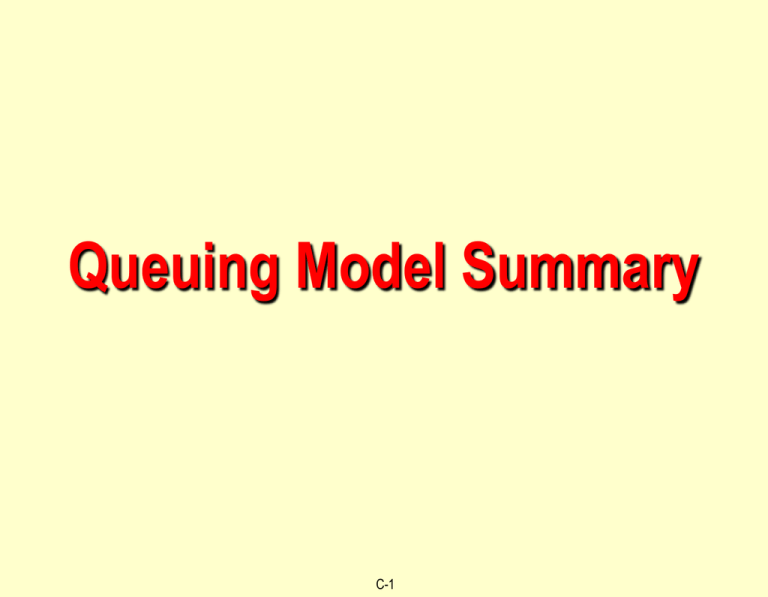
Queuing Model Summary C-1 Assumptions of the Basic Simple Queuing Model Arrivals are served on a first-come, first-served basis (FCFS) Arrivals are independent of preceding arrivals Arrival rates are described by the Poisson probability distribution, and customers come from a very large population Service times vary from one customer to another, and are independent of each other; the average service time is known Service times are described by the negative exponential probability distribution The service rate is greater than the arrival rate C-2 Types of Queuing Models (A/B/C notation) A: probability distribution of time between arrivals B: probability distribution of service times C: number of parallel servers M = exponential distribution of times (or equivalent Poisson distribution of rates) D = deterministic or constant time G = general distribution with a mean and variance (e.g., normal, uniform, or any empirical distribution) Ek = Erlang distribution with shape parameter k (if k =1, Erlang equivalent to M; if k = ∞, Erlang equivalent to D) C-3 Types of Queuing Models (A/B/C notation) Simple (M/M/1) Example: Information booth at mall, line at Starbucks Multi-channel (M/M/S) Example: Airline ticket counter, tellers at bank Constant Service (M/D/1) Example: Automated car wash Limited Population Example: Department with only 7 copiers to service C-4 Simple (M/M/1) Model Characteristics Type: Single-channel, single-phase system Input source: Infinite; no balks, no reneging Arrival distribution: Poisson Queue: Unlimited; single line Queue discipline: FIFO (FCFS) Service distribution: Negative exponential Relationship: Independent service & arrival Service rate > arrival rate C-5 Simple (M/M/1) Model Equations Ls = Average number of units in the system - Ws = Average time in the system 1 - 2 Lq = Average number of units in the queue ( - ) ( - ) = Wq = Average time waiting in the queue System utilization C-6 Simple (M/M/1) Probability Equations Probability of 0 units in system, i.e., system idle: P = 1- = 10 Probability of more than k units in system: P = n>k () k+1 Where n is the number of units in the system C-7 Multichannel (M/M/S) Model Characteristics Type: Multichannel system Input source: Infinite; no balks, no reneging Arrival distribution: Poisson Queue: Unlimited; multiple lines Queue discipline: FIFO (FCFS) Service distribution: Negative exponential Relationship: Independent service & arrival Individual server service rates > arrival rate C-8 (M/M/S) Equations Probability of zero people or units in the system: P0 1 S1 1 λ n 1 λ S Sμ n 0 n! μ S! μ Sμ λ S Average number of people or units in the system: Ls Average time a unit spends in the system: 1 Ws P 2 0 S 1!S P0 S 1!S S C-9 P0 = Probability of 0 Units in MultipleChannel System (needed for other calculations) P0 1 S 1 1 n 1 S S n 0 n! S! S n! = 1 x 2 x 3 x 4 x……..x (n-1) x n n0 = 1; 0! = 1 C-10 (M/M/S) Equations Lq L s Average number of people or units waiting for service: Average time a person or unit spends in the queue Wq W s C-11 1 Constant Service Rate (M/D/1) Model Characteristics Type: Single-channel, single-phase system Input source: Infinite; no balks, no reneging Arrival distribution: Poisson Queue: Unlimited; single line Queue discipline: FIFO (FCFS) Service distribution: Constant Relationship: Independent service & arrival Service rate > arrival rate C-12 (M/D/1) Equations Average number of people or units waiting for service: Lq Average time a person or unit spends in the queue Wq Average number of people or units in the system: Ls L q Average time a unit spends in the system: Ws Wq C-13 Limited Population Model Characteristics Type: Single-channel, single-phase system Input source: Limited; no balks, no reneging Arrival distribution: Poisson Queue: Limited; single line Queue discipline: FIFO (FCFS) Service distribution: Negative exponential Relationship: Independent service & arrival Service rate > arrival rate C-14 Single-Channel, Single-Phase Manual Car Wash Example Arrival rate = 7.5 cars per hour Service rate = an average of 10 cars per hour Utilization = / = 75% C-15 Single-Channel, Single-Phase Automated Car Wash Example Arrival rate = 7.5 cars per hour Service rate = a constant rate of 10 cars per hour Utilization = / = 75% C-16 Comparisons Manual wash, single server Automated wash, single server Manual wash, two servers Cars waiting 2.25 1.125 0.1227 Cars in system 3 1.875 1.517 Time waiting 18 minutes 9 minutes 1 minute Time in System 24 minutes 15 minutes 7 minutes C-17
